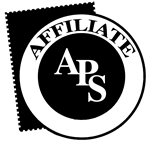During its 65 year history, the SCANDINAVIAN COLLECTORS CLUB has experienced four distinct periods of development.
The first era, "Finnish-American Stamp Club," started when six collectors met and organized the Club on November 25, 1935 in New York City. It continued under this name until February 13, 1942, when 17 members met, 14 voting to change the name of the organization to the "Scandinavian Collectors Club of New York."
The second era is the "New York" era. By November, 1943, the Club had 42 members and published the first issue of The Posthorn. There were two categories of membership, resident (New York City area) and non-resident. Only resident members were officers of the Club, but separate chapters were encouraged. The end of this era started in about 1958. By then, over 800 membership numbers had been assigned and six chapters organized. In late 1959, the members voted to change the name of the Club to the "SCANDINAVIAN COLLECTORS CLUB."
The third era is the "CHICAGO" era, or more appropriately, the "national" era. On April 26, 1960, the Club was incorporated in the state of Illinois and all officers were from that area. There were again two membership categories, active (residents of the USA) and associate members. Only active members had voting rights. The Board of Governors was expanded to include the Chapter Presidents. After operating from Chicago for six years, the Board decided to broaden the geographical area represented by the officers.
The fourth era, "the international era," came into being when, on June 22, 1972, a new set of By-Laws was adopted and the Club was re-incorporated in the State of Delaware. All members, no matter where residing, had equal voting rights.
The first issue of The Posthorn, the Club's official publication, was dated November, 1943 and was an 8 page typed publication. This has grown into the modern "Bank of Scandinavian Philatelic Knowledge" as the new Posthorn which currently runs about 48 pages per issue. Over the years, many other services were added including Study Groups, a Stamp Mart, Special Awards, and an extensive Library.

